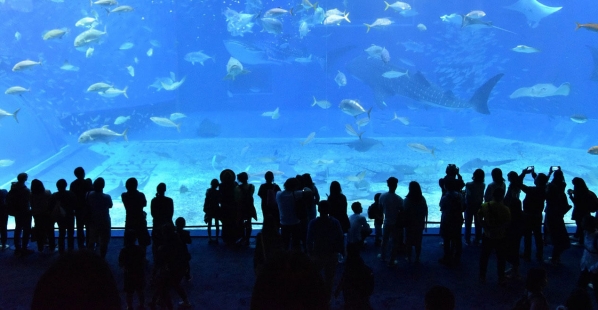Touch Tanks Are Bad for Animals
Have you seen Finding Dory? Do you remember the part of the movie where Hank and Dory are in the touch tank? It’s a shallow tank that kids are allowed to put their hands in and where they can actually touch the animals. But that was NOT where Hank and Dory wanted to be! They were scared, and all the animals tried to hide because they didn’t want to be poked and prodded.
Think about it from the animal’s side: Can you imagine how scary it would be if a giant hand came out of nowhere and grabbed you while you were walking down the street? It would be terrifying. It can be tempting to touch sea animals in a touch tank, but there are lots of reasons why it’s bad for them. It could even kill them.
Not Safe for Animals
Our hands have a crazy number of germs on them. If people put their hands in a touch tank, the water can become full of germs. That means that the animals get covered with a lot of harmful stuff.
Besides being germy, kids can sometimes get over-excited. They can easily hurt delicate sea animals by being rough with them—and so can adults—so people shouldn’t touch them. The stingrays, sharks, and other sea animals in touch tanks can’t escape or say no to being handled.
A Strange Place to Be
Aquariums and marine parks aren’t at all like the oceans where animals feel at home, and touch tanks aren’t a natural place for them to be. Being trapped in a touch tank makes them feel stressed, and they don’t have any privacy. They can’t do anything that they would naturally want to, like looking for the food that they like best, exploring the world around them, or choosing who to spend time with.
Sensitive and shy animals like sharks and stingrays shouldn’t be forced to live in shallow tanks with no place to hide.
Animals Are Dying
In recent years, many animals have died in touch tanks:
- In 2007,18 of 19 stingrays died at the Fresno Chaffee Zoo in California.
- In 2008, 41 of 43 stingrays died at the Calgary Zoo in Canada.
- In 2015, all 54 stingrays died at the Brookfield Zoo in Illinois.
- In 2016, 18 stingrays and three sharks died at the John Ball Zoo in Michigan.
Most of these deaths were because of mechanical problems, mistakes by humans, or harmful chemicals in the tanks. But there are no mechanical problems in the ocean, and these animals don’t naturally spend time with humans, so they wouldn’t have died in these ways if they had been living where they belong: the ocean.
If your class or friends want to go to an aquarium or any other place that has a touch tank, ask if you can pick a more animal-friendly activity or outing.
When you come across animals in their natural habitat, always remember these tips:
- Observe them through binoculars or a camera lens—never touch them!
- Whenever possible, stay about 100 yards away—the length of a football field.
- Don’t bother, feed, or try to move wild animals. This can upset them, change their natural behavior, and affect other animals nearby.





Under 13? Ask your parents bee-fore you continue!